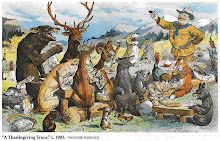Mission OF THE WOLF CONSERVATION CENTER IN SOUTH SALEM, NY
protecting their future.
We accomplish this mission by:
- Promoting wolf conservation through education
- Supporting wolf reintroduction in federally designated areas that can sustain
viable wolf populations - Being the preeminent facility in the eastern United States for the captive
breeding and pre-release of endangered wolf species - Providing the natural habitat for a few captive wolves where observation of
natural behavior is possible
- Wolves in the wild are not dangerous to people
- Wolves perform a vital role in the environment
- Wolves are not pets
- It is everyone's responsibility to do something each day to make the world a
better place
_______________________________________________________________________________________________________
WCC Home to Mexican Wolf Breeding in 2010!
In 2010, there will be only three breeding pairs of Mexican gray wolves in the U.S. Mexican Wolf Species Survival Plan (SSP), and the most important of those pairs will be living - and hopefully having pups -- at the WCC!"F810, who has been living 'solo' at the WCC for the past several months, is the #1-ranked female in the U.S.," says WCC curator, Rebecca Bose, who recently returned from the annual Mexican gray wolf SSP meeting in Creel, Mexico. "This Fall she will be joined in her enclosure by M691 from the Brookfield Zoo in Chicago." Not only that, but this pair of wolves and their progeny will be the "understudy" for another pair that is currently slated for release into the wild this Spring. "If, for any reason, that pair cannot be released," explains Bose, "F810 and her mate will be the ones to go instead!"
But that's not the only news to come out of the meeting. Long-time WCC residents (and unsuccessful breeders) M575 and F516 will be trading places with three young brothers, M804, M805, and M807, from The Oklahoma City Zoological Park - collectively ranked the #1 males in the U.S. The Oklahoma facility felt that these three were outgrowing their enclosure, and were eager to trade them for an older, non-breeding pair. The three young studs are, as their numbers imply, F810's long-lost brothers, so this is a family reunion of sorts! They were born at the Wild Canid Science and Research Center in St. Louis, and the SSP Program is eager to get them away from interaction with people, so that they can be bred and reintroduced to the wild in the not-too-distant future (at six years old they are ripe for romance!)The WCC will also be welcoming F749 from the Servilletta pre-release facility in New Mexico - currently ranked as the #7 female in the U.S. She has already bred successfully twice, but her facility was becoming overcrowded, and she needed a temporary home. "We will put her in a pen adjacent to the three brothers so that they can check each other out, and, if they get along, will allow them to comingle later in the Fall," explains Bose. "Then we will separate them during the Winter breeding season, and put them back together in the Spring."
For this breeding season, a team from the St. Louis Zoo will be traveling to the WCC to collect semen from 6 important males - including the pups born at the WCC on Earth Day 2008. "It is facilities like the Wolf Conservation Center that make the whole SSP program work," raved Maggie Dwire, SSP Program Biologist for the U.S. Fish & Wildlife Service at one of the sessions of the annual meeting.
But that's not the only news to come out of the meeting. Long-time WCC residents (and unsuccessful breeders) M575 and F516 will be trading places with three young brothers, M804, M805, and M807, from The Oklahoma City Zoological Park - collectively ranked the #1 males in the U.S. The Oklahoma facility felt that these three were outgrowing their enclosure, and were eager to trade them for an older, non-breeding pair. The three young studs are, as their numbers imply, F810's long-lost brothers, so this is a family reunion of sorts! They were born at the Wild Canid Science and Research Center in St. Louis, and the SSP Program is eager to get them away from interaction with people, so that they can be bred and reintroduced to the wild in the not-too-distant future (at six years old they are ripe for romance!)The WCC will also be welcoming F749 from the Servilletta pre-release facility in New Mexico - currently ranked as the #7 female in the U.S. She has already bred successfully twice, but her facility was becoming overcrowded, and she needed a temporary home. "We will put her in a pen adjacent to the three brothers so that they can check each other out, and, if they get along, will allow them to comingle later in the Fall," explains Bose. "Then we will separate them during the Winter breeding season, and put them back together in the Spring."
For this breeding season, a team from the St. Louis Zoo will be traveling to the WCC to collect semen from 6 important males - including the pups born at the WCC on Earth Day 2008. "It is facilities like the Wolf Conservation Center that make the whole SSP program work," raved Maggie Dwire, SSP Program Biologist for the U.S. Fish & Wildlife Service at one of the sessions of the annual meeting.










No comments:
Post a Comment